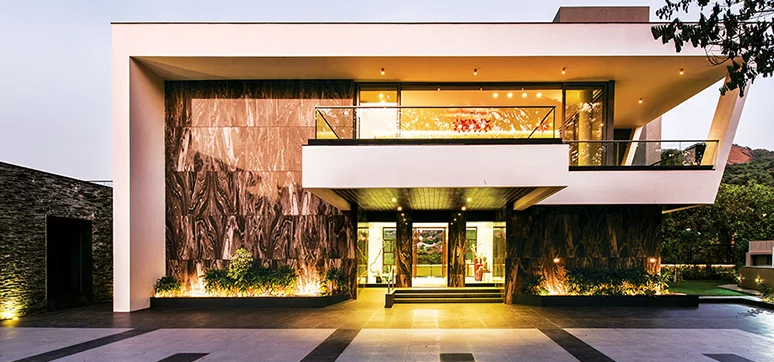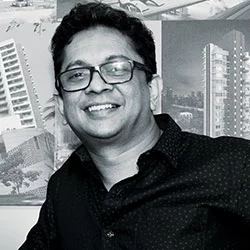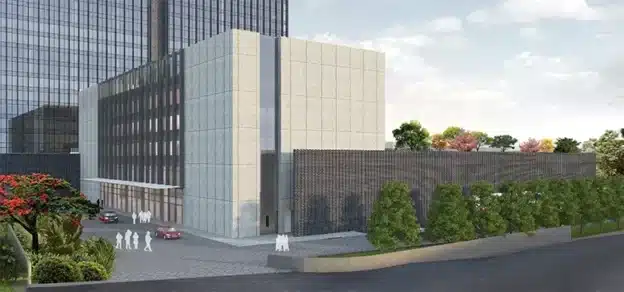Stone cladding of buildings has always been part of the architectural design for thousands of years. Its aesthetics and a sense of permanence have made it a popular material amongst builders and architects. Stone cladding systems have vastly improved over the years with the advances in technology and improved building systems. Conventionally, dry cladding systems consist of a process of fixing stone slabs with stainless steel brackets anchored to the wall or to an MS subframe. The joints between the stone slabs are closed with a sealant. In this system, the gap created between the wall and the stone cladding has no ventilation.
The sealant used in this system also eventually deteriorates, causing ingress of water, which could affect the MS framework causing corrosion and eventually weakening the system. A ventilated stone cladding system has several advantages over conventional dry cladding systems. In broad terms, a ventilated facade is composed of three parts: an interior surface, an insulating layer and an exterior surface.

The interior surface, which is located directly onto the exterior wall of the building, has the primary purpose of supporting the exterior surface of the facade. It is also the surface that the insulating layer will adhere to. Meanwhile, the exterior surface is what is commonly referred to as the ‘finish’.
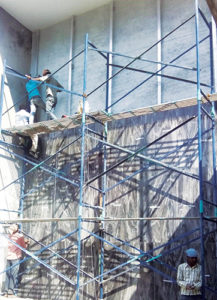
The combined effect of this structure is to leave a small cavity just a few centimetres wide which forms an air pocket between the interior and exterior surfaces, which allows the free movement of air, and this is the key to how a ventilated facade works. During the winter months, the cavity in the ventilated facade between the cladding and the exterior wall of the building causes lower dispersion of the interior heat, and as such, it acts as a ‘separator’ between the outside and the exterior wall of the building.
On the other hand, in summer this cavity allows the air to be constantly recycled, thereby preventing the heat from condensing and becoming ‘concentrated’: warm air escapes through the top of the cladding, which means that it is replaced by cooler air, and so any increase in exterior heat will not affect the inside of the building.
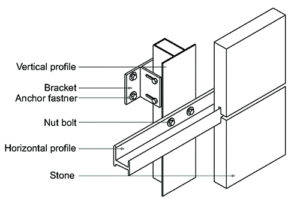
In addition to thermal insulation, ventilated dry cladding systems also provide excellent acoustic sound insulation, reducing external sound to almost 20 per cent. GA design has used a ventilated dry cladding system for marble known as the Liao ventilated system by AUM Enterprises in one of their projects. The Liao ventilated system uses horizontal sections of aluminium supported on an aluminium subframe bracketed to the wall to support the stone slabs.
The Liao system recommends the use of Hilti steel anchor fasteners. Since the system is in aluminium, it eliminates the problem of corrosion which would be common in the case of metal dry cladding systems.
The system is lightweight and easy to install. Also, since it is a ventilated system, it allows the hot air which gets trapped between the stones and the wall to circulate, creating an efficient insulator. The system also does not use sealants which also tend to disintegrate after a long period of time.
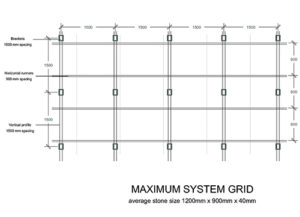
Before installing the system, care has to be taken that the surface is properly treated for waterproofing and that there are no areas where water could accumulate. The vertical sections are fixed at a maximum distance of 1.5m.
These are fixed with fasteners, which could be RCC or brick fasteners or chemical fasteners depending on the weight of the stone. The horizontal sections are fixed to the vertical sections with nuts and bolts. The stone slabs are then fixed to the horizontal profile by inserting the groove of the stone in the vertical flap of the horizontal profile. Successive stones are then placed starting from the lowermost level.
The vertical grooves between the stones must always be kept open with a spacing of 2-15mm and the horizontal grooves should be about 6-12mm. The thickness of the stone could vary from 20mm to 40mm depending upon the strength of the stone.
Infinity House, Khandala

The designers have used a ventilated system known as Laio ventilated system, designed by AUM for a villa project known as Infinity House in Khandala. This GA project was located in Khandala, the architects were looking for a system that would be able to face the rigours of the extreme weather conditions faced here. During the rainy season, there is heavy rainfall and a lot of moisture content in the air.

Summers are very hot too. Since the system is in aluminium, the problem of corrosion was taken care of. The system also does not use any sealants which otherwise tends to give maintenance issues.

The system provides thermal insulation. The stone, being of a strong nature, was fixed in 20mm thickness and therefore we did not have to procure the marble separately, even if the thickness would have been more. All these factors supported the use of the system, and even today, after several years, the marble fixing appears flawless and is in excellent condition.
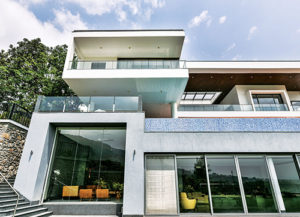
QUICK FACTS:
Project: Infinity House
Location: Khandala, Maharashtra
Client: Undisclosed
Architect: Rajan Goregaoker
Commencement Date: January 2014
Completion Date: December 2017
ACP/Glass/Concrete: ALUMEC – Glass
Consultants: Structural- Integrated Building Services | Façade- AUM (Marble Cladding)
Information Credit: AUM Enterprises, www. aumenterprises.net
